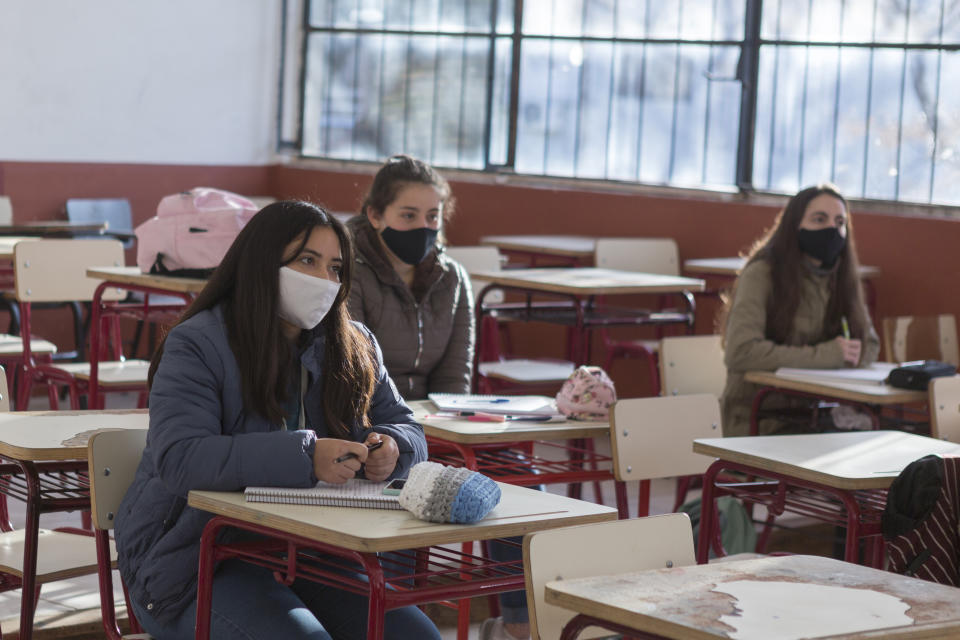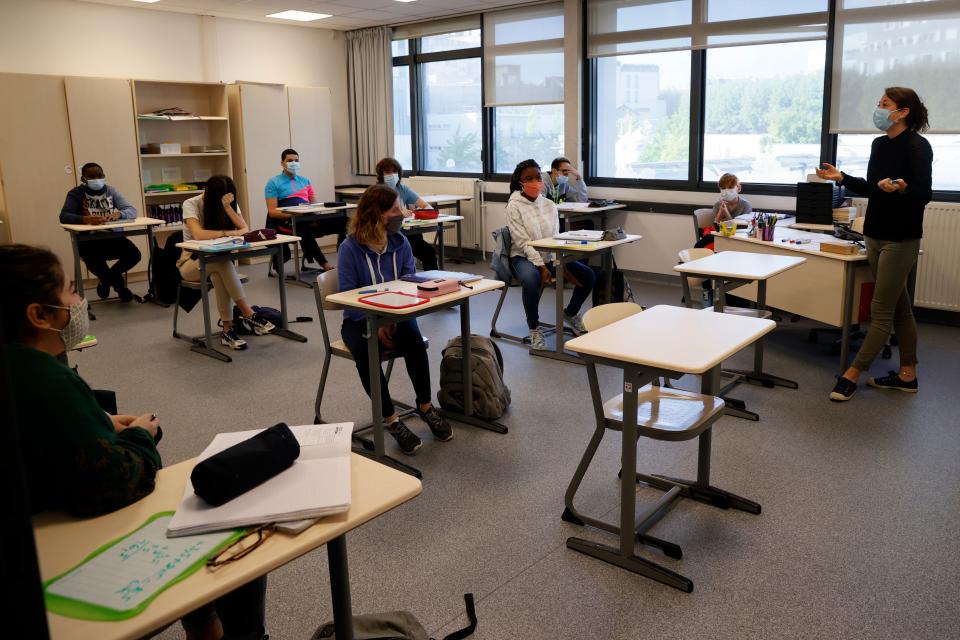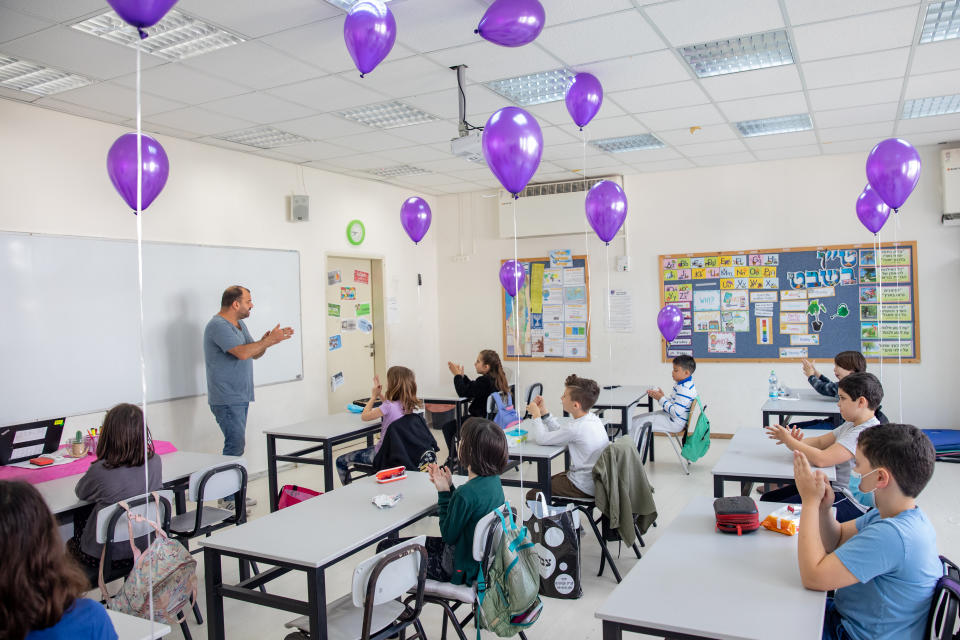COVID-19: How countries are reopening their schools amidst pandemic
The Centre is formulating a plan to reopen schools and educational institutions in a phased manner from September 1 to November 14. As per media reports, students in classes 10 to 12 will be asked to join for the first 15 days of September. Schools will also likely run in two shifts, on 33 per cent staff capacity. Primary sections, however, will not reopen any time soon, reports say. While the Central Government will issue Broad Standard Operating Procedures (SOPs), it will leave the final decision on when and how to reopen schools, to the respective states.
In Assam, which will reopen its doors to students from September 1, teachers and all employees will have to undergo mandatory COVID-19 tests. All those testing negative will also have to ensure they are back in school on September 1. Meanwhile, Meghalaya’s education minister Lahkmen Rymbui has said that a committee has submitted a report on the protocols of reopening schools.
It has been close to six months since the WHO declared COVID-19 a pandemic, and countries across the world shut down their schools, offices and other institutions as a measure of safety. While public health experts argue that virus rates in the community should be low before schools are reopened, others including educators, are worried about the implications that extended school closures have on students, especially those from underprivileged backgrounds who do not have the resources to continue education online.
However, there is also the question of whether it is safe to send children back to school. While previous studies have shown that the viral load among those below the age of 12 is less, more recent reports state that children may not fall seriously ill but can be silent spreaders and bring the virus home.
With the world slowly limping back to business, countries have either reopened their schools or are mulling to do so, with varying degrees of success.

Uruguay
The South American country which shut down schools on March 13, was one of the first to bring its students back to the physical classroom. The reopening was in a gradual manner - schools in the rural areas opened first in April. In early June, Uruguay brought back its high school students and those struggling with access to online classes. The country then opened schools for all students in non-urban areas. Students in the capital city of Montevideo finally returned to school on June 29.
Experts state that there is a lot to learn from the way in which Uruguay planned its school reopening. The small country of just 3.5 million people has managed to control the virus, despite sharing a border with Brazil, the country with the second-highest number of cases. In an article in The Conversation, Jennifer Pribble, Associate Professor of Political Science and Global Studies at the University of Richmond writes that Uruguay’s low inequality levels, the people’s trust in the government and democracy and inclusive social policies, have enabled the country to manage the pandemic and its reopening in a better way.

United States
The Federal government has left it up to the states to decide on when it would be safe to reopen schools for students and different states have come up with policies and suggestions. As per Education Week that tracks developments in the education business, 20 of the 25 largest school districts have opted for remote learning once schools reopen in fall. The remaining are either opting for a hybrid model or for a full in-person reopening of schools. Florida has also ordered all its schools to start in-school classes by August 31, except in areas that are hard hit by the virus.
New York City is looking at a hybrid option where, for part of the week students would be learning remotely, while the rest would be at school. Teachers across New York, the country’s largest school district, however, have threatened to go on strike over plans of opening schools for partial in-person learning.
In a video statement, the unions have said that it is not safe for teachers to return to buildings and classrooms right now. At 5.54 million cases and over 1,70,000 deaths, the United States has the highest number of cases.

France
Schools in France started reopening in May on a voluntary basis, with the government restricting the number of students to 10 in nursery and 15 in secondary school. Soon after the reopening, though, many new cases arose, leading to schools shutting down again. Schools reopened in end June and most children went back to physical classroom setups for a period of two weeks, just to break again for the summer holidays. Schools will reopen in September, and the Government has made it mandatory for all children to attend.
The Government guidelines recommend social distancing of 1 metre per student, however, this is not mandatory If there isn’t enough space. Students above the age of 11 are also required to wear masks, but nursery children are banned from wearing masks - according to the authorities getting such small children to cover-up could be counterproductive.
Sweden
Sweden was one of the only countries in the world to not impose an official lockdown. It also did not impose masks on its citizens, nor did the country shut down its schools. As per a joint report issued by Sweden and Finland, this decision of the country to remain open has not resulted in a higher rate of infection than in neighbouring Finland, where schools were closed temporarily.
From March, when WHO declared COVID-19 a pandemic, till mid-June when the school year ended, Sweden reported a total of 1,124 cases of school-aged children contracting the virus. While children made up 8.2 per cent of the total cases in Finland, it was just 2.1 per cent in Sweden. As per reports, pediatricians have also reported fewer severe cases among younger children.
Denmark
The first European country to reopen its schools after the outbreak, Denmark welcomed its children back to school on April 15. The decision was made jointly by the Central Government and Parliament, which cited children’s right to education as a reason for the move.
Pre-schools, early childcare centres and primary schools (til grade 5) reopened on April 15 while secondary schools were reopened on May 18. Children between the ages of 2-12 returned to school and were sectioned off into micro-groups of 12 that arrived at school at different times, ate separately, remained in their own designated zones at the playground and were taught by one teacher.
While there is no emphasis on wearing masks, children are asked to maintain distance and reminded to wash hands frequently. Classes are also held outdoors wherever possible and all education material and equipment are cleaned twice a day.

Japan
While Japan closed down its schools on March 2 to prevent the spread of the virus, schools began to reopen early May with staggered attendance, after the Government lifted the state of emergency across the country’s prefectures. Children entering schools go through body temperature checks, are discouraged from speaking to each other and attend classes on alternating days to allow for distancing.
Parents, teachers and students have, however, expressed displeasure over the reopening of schools and the strict measures that are in place. The school reopenings have also corresponded with new infections in some parts of the country. A survey conducted by Save The Children Japan to find out what children were thinking amidst the pandemic, revealed that Japanese children wanted to be allowed more information on measures being carried out to curb the spread of the virus.

Israel
The country, which has witnessed widespread protests over Prime Minister Benjamin Netanyahu’s handling of the pandemic, has not seen much success in its school reopening either. Israel reopened its schools on May 17, the day Netanyahu’s Government was sworn in. Within 10 days, a major outbreak of the disease happened at a high school in Jerusalem. A total of 153 students and 25 staff members tested positive for the virus, which spread further into homes and neighbourhoods and became one of the largest outbreaks from a school.
This forced other schools to shut down again, and many students and teachers across Israel were quarantined. The Education Ministry had issued safety guidelines advising social distancing of atleast six feet, wherever possible, ensuring frequent hand washing and advising students in fourth grade and higher classes to wear masks.
Social distancing has, however, proven to be a challenge in many schools due to the limited space. Further, after a record heatwave in May, many students also did not wear masks citing the heat and suffocation.
Siegal Sadetzki, the Health Ministry’s top health official quit in July over concerns that the government campaign to halt the spread of the virus had lost direction, and that the health ministry had ignored her warning against opening schools and businesses so soon.

Germany
In Germany, each state has its own scheduled summer break and reopening dates. While the north-eastern state of Mecklenburg-Western Pomerania, with the country’s lowest infection rates, reopened first, other regions including Berlin, Brandenberg and North Rhine-Westphalia, Germany’s most populous state, followed suit.
In Mecklenburg-Western Pomerania, two schools had to be shut down due to infections, within the first week of reopening. In Berlin, too, less than two weeks after reopening, 41 schools have reported students and teachers who have tested positive to the virus.
When it had initially announced the reopening of schools, the Berlin Senate had passed strict guidelines on hygiene and social distancing measures that schools had to put into place. The latest guidelines, however, do not require social distancing. North Rhine-Westphalia has made masks compulsory in classrooms, till August 31. The central government requires students and teachers to wear masks in the hallways, but not in the classrooms or playgrounds. Teachers can also avail of free testing if required.


